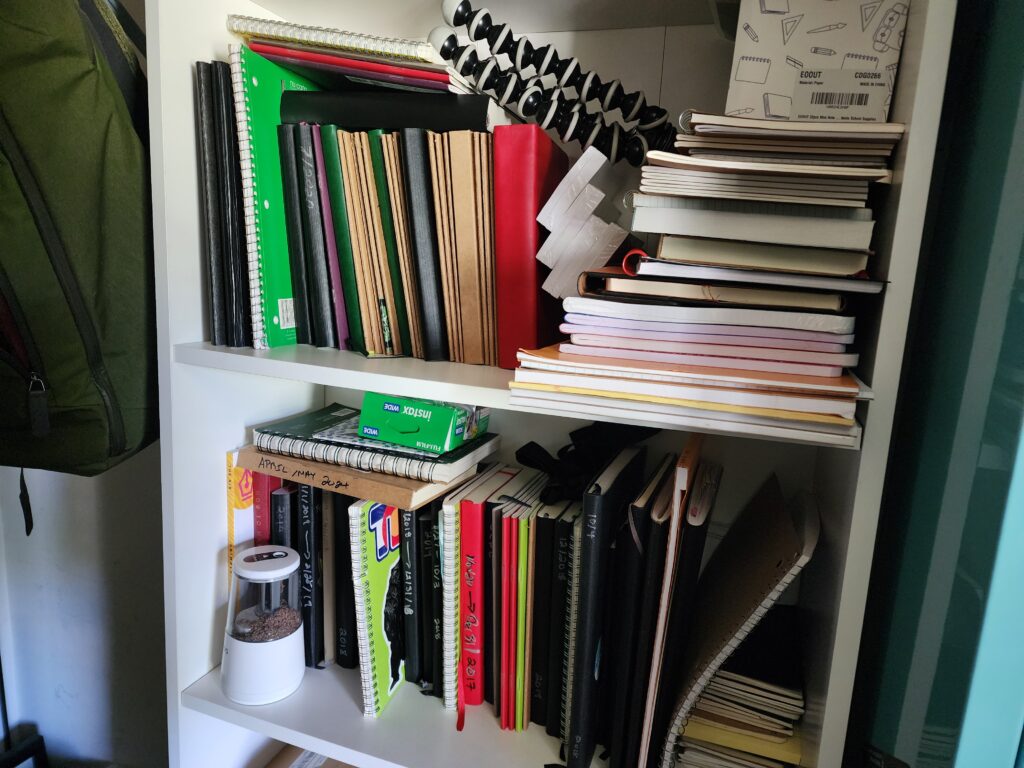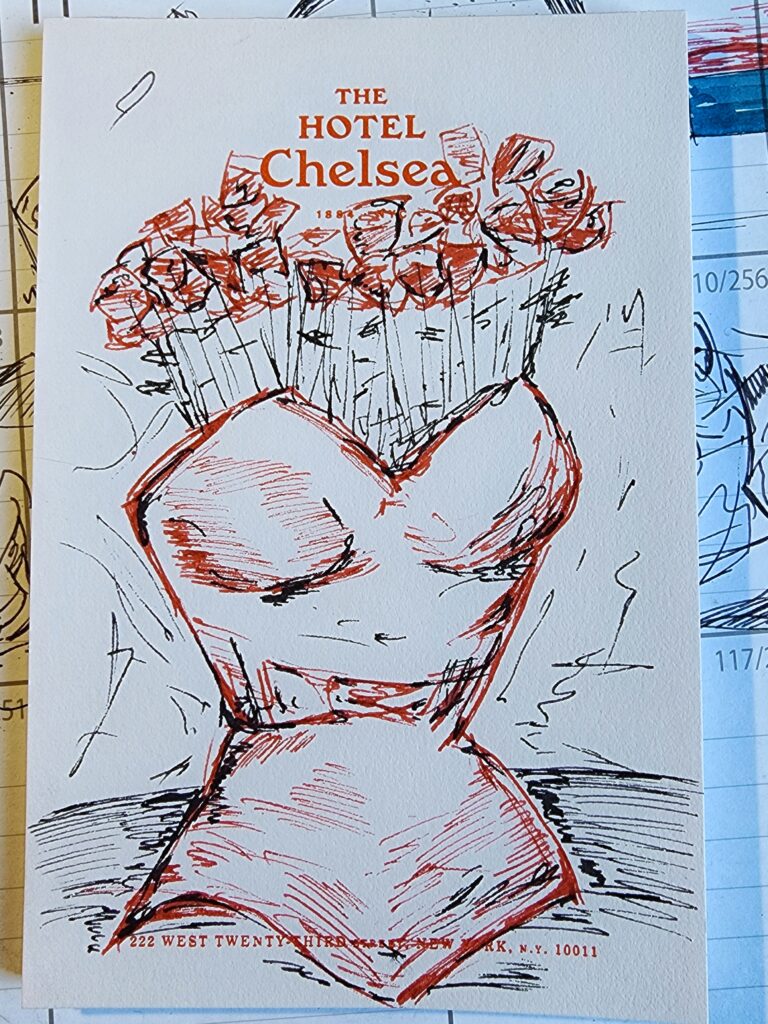In the closet of my studio are two shelves dedicated to notebooks. When I last organized them, I wanted a shelf to be for used books and another shelf for the blanks. It isn’t anything like that anymore. My studio suffers terribly from entropy.

This picture doesn’t account for the three cases of notebooks on the floor of the closet, or the dozen that live in various states in various places all over the house. Also not pictured: sketchbooks, large format sheets, printer papers, stationary…
It’s like when you buy clothes: if you find something you like that fits well, buy it in every color. But here, if I find a paper that really sings I’ll stock up however I can. It’s hardly a problem for those who are casual about their notebooks and printer papers, but every now and again a style of paper gets discontinued. They stop making it!
I’ve been enjoying a little 4X6 notepad I took from the desk when I stayed at Hotel Chelsea last fall. It is a dream to draw on and has resulted in a few sketches people wanted to keep. I reached out to the hotel to see if they would send me more of the pads (they won’t) but they did tell me what kind of paper they printed their stationary on.

“The original paper is Lettra Impress Light Pink 32# Writing. This notepad has the letterpress light depression.
The most recent order was on Mohawk Via Light Pink 24# Writing.
Unfortunately, both papers have been discontinued and are no longer available.”
Of course it is.
It’s not the end of the world. Certain papers work well with certain inks, pens, graphites, and pastels. There is no one combination that works for everyone. Most people will never think about it until they go to sign a receipt with a Bic on a hard countertop (physics, my friend, keeps that ink from flowing!).
Notebooks are a totally different beast. Not only am I picky about the quality of the paper, but how it is bound. I want unlined, blank notebooks with a sewn or taped spine. Layflat is key. While the market for fancy, boutique notebooks (the Moleskines and Decomposition notebooks of the world) is growing, a hefty price tag does not mean a good writing experience.
Moleskine, for example, bleeds like crazy and doesn’t do well with most of the fountain pens I use. Yet, the kraft-bound sketchbooks from EOOUT and Dynta run about $5 a piece for 120 pages – but you can only get them through Amazon (which is why I won’t be linking them here).
“Paper is a wonderful technology,” hails Austin Kleon from his Austin Studio. He’s quoting Walter Isaacson from his Leonardo da Vinci biography.
Paper is a wonderful technology for the storage and retrieval of observations. Five hundred years later, Leonardo’s notebooks are around to astonish and inspire us. Fifty years from now, our own notebooks, if we work up the initiative to start writing them, will be around to astonish and inspire our grandchildren, unlike our tweets and Facebook posts.
Every now and again I get this weird anxiety about how long things are supposed to last in the digital landscape and what would happen if I lost it all. I think about all of the various web-based projects and iterations of this very website that have come and gone. I can’t imagine all of the dead links to nowhere. I wonder if I should be scanning the pages of my notebooks after I fill them up and keep them in the cloud (which is backed up to a physical hard drive and a third-party cloud backup).
A lot of the internet is stuff people forgot about – social media accounts that haven’t been updated in a decade, forgotten blogs, content that snuffs out of existence because the company went belly up and no one was left to pay the server fees.
I think of all this lost stuff. But maybe this is exactly how long these things are supposed to last? Paper lasts a fairly long time depending on the quality of the product and the environment it lives in. Water, fire, mildew, bugs, and the sickening oils of human fingers all rot the page but the ideas are still around. The web is broken links, but maybe that’s just how we decided it needed to be – build fast, die fast.

